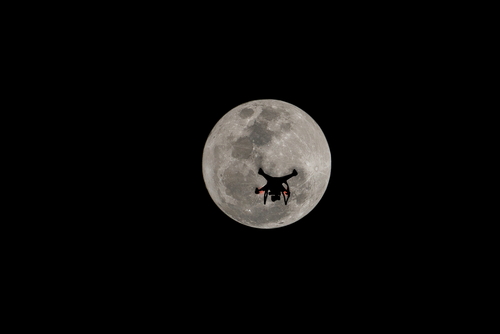The US Department of Transportation on 14 January 2019 announced a proposal to allow commercial drone operators to fly their drones over people and at night without having to apply for waivers, The draft rule-making document (see “For more information” below) proposes to allow: “operations of small unmanned aircraft over people in certain conditions and operations of small UAS at night without obtaining a waiver. It would also require remote pilots in command to present their remote pilot in command certificate as well as identification to certain federal, state, or local officials, upon request, and proposes to amend the knowledge testing requirements in the rules that apply to small UAS operations to require training every 24 calendar months. This proposal would be the next phase in integrating small UAS using a risk-based approach. These amendments would allow expanded small UAS operations and reduce the knowledge testing burden on remotepilot in command certificate holders…this proposal is technologically neutral, with the understanding that technology and applications will evolve in the time between the publication of this proposal and the final rule, and beyond.”
To fly commercial drones at night operators would have to complete knowledge testing or training, including new subject matter areas related to operating at night and ensure that the small UAS has an anti-collision light illuminated and visible for at least 3 statute miles.
To fly drones over people the operator would have to categorise the risk of their operation into three types – categories one, two and three.
- Category one The FAA determined that small unmanned aircraft weighing less than 0.55 pounds pose a low risk of injury when operating over people. Accordingly, Category one is simple and straightforward: operators would be able to fly small unmanned aircraft weighing 0.55 pounds or less over people. While these operations would be subject to all of the existing requirements governing small UAS operations in part 107,12 the FAA does not propose any additional restrictions as a condition of flying over people.
- Category two is not solely weight-based. The FAA proposes a set of performance-based requirements that would allow a small unmanned aircraft to operate over people if the manufacturer can demonstrate that, if the unmanned aircraft crashed into a person, the resulting injury would be below a certain severity threshold. The manufacturer would have the flexibility to design the unmanned aircraft in any way that would allow it to meet this threshold….the small unmanned aircraft must be designed, upon impact with a person, not to result in an injury as severe as the injury that would result from a transfer of 11 ft-lbs of kinetic energy from a rigid object… the FAA proposes that the unmanned aircraft would not have exposed rotating parts that could lacerate human skin…no small UAS could be operated over people if it has an FAA-identified safety defect.
- Category three allows for a higher injury threshold than Category two, but that limits an individual’s exposure to the risk of injury through operational limitations. Under category three a small unmanned aircraft will have to be designed, upon impact with a person, not to result in an injury as severe as the injury that would result from a transfer of 25 ft-lbs of kinetic energy from a rigid object….the unmanned aircraft would not have exposed rotating parts that could lacerate human skin…and no small UAS could be operated over people if it has an FAA identified a safety defect.
For more information
https://www.faa.gov/uas/programs_partnerships/DOT_initiatives/media/2120-AK85_NPRM_Operations_of_Small_UAS_Over_People.pdf




